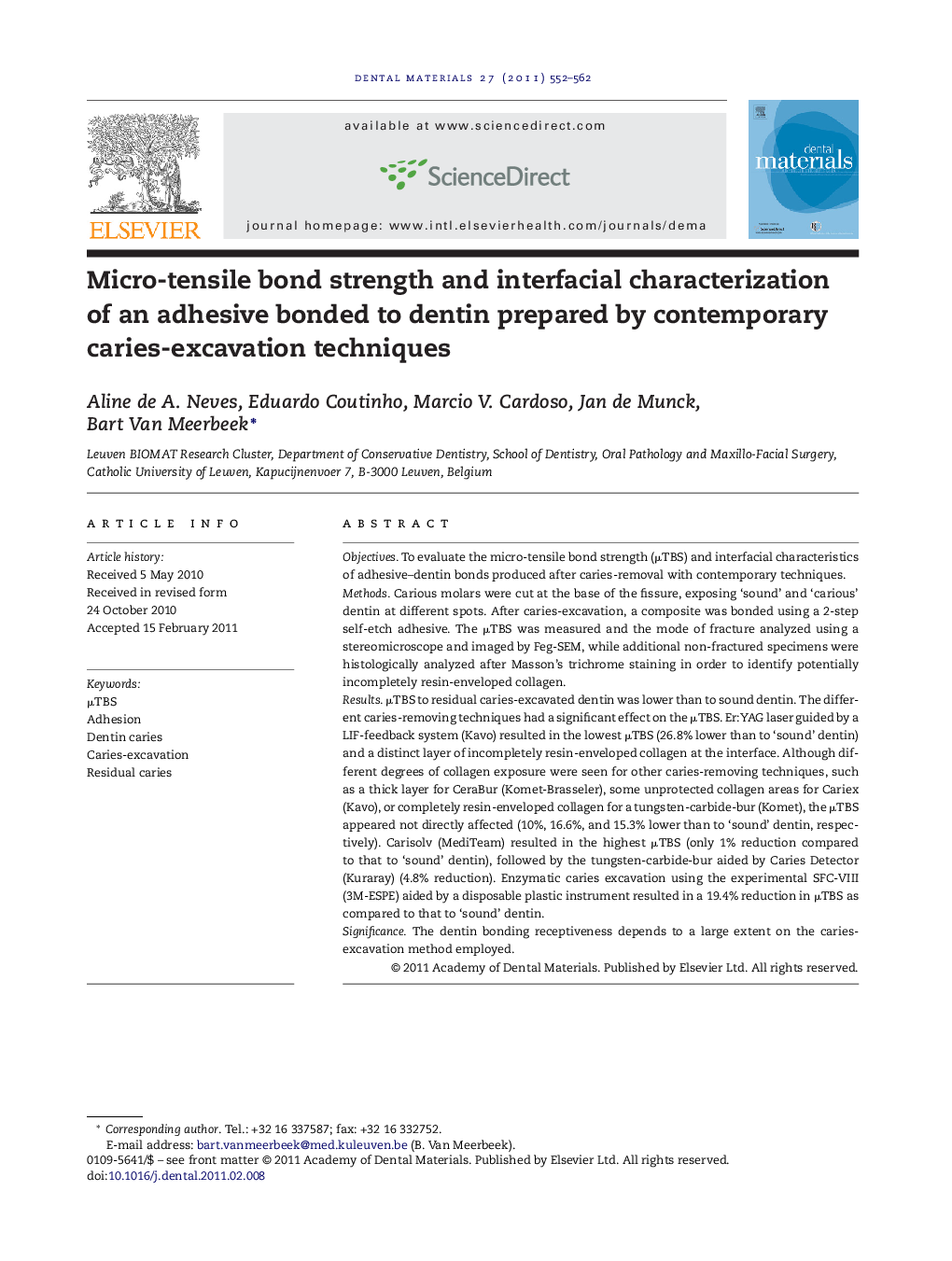| کد مقاله | کد نشریه | سال انتشار | مقاله انگلیسی | نسخه تمام متن |
|---|---|---|---|---|
| 1421941 | 986431 | 2011 | 11 صفحه PDF | دانلود رایگان |

ObjectivesTo evaluate the micro-tensile bond strength (μTBS) and interfacial characteristics of adhesive–dentin bonds produced after caries-removal with contemporary techniques.MethodsCarious molars were cut at the base of the fissure, exposing ‘sound’ and ‘carious’ dentin at different spots. After caries-excavation, a composite was bonded using a 2-step self-etch adhesive. The μTBS was measured and the mode of fracture analyzed using a stereomicroscope and imaged by Feg-SEM, while additional non-fractured specimens were histologically analyzed after Masson's trichrome staining in order to identify potentially incompletely resin-enveloped collagen.ResultsμTBS to residual caries-excavated dentin was lower than to sound dentin. The different caries-removing techniques had a significant effect on the μTBS. Er:YAG laser guided by a LIF-feedback system (Kavo) resulted in the lowest μTBS (26.8% lower than to ‘sound’ dentin) and a distinct layer of incompletely resin-enveloped collagen at the interface. Although different degrees of collagen exposure were seen for other caries-removing techniques, such as a thick layer for CeraBur (Komet-Brasseler), some unprotected collagen areas for Cariex (Kavo), or completely resin-enveloped collagen for a tungsten-carbide-bur (Komet), the μTBS appeared not directly affected (10%, 16.6%, and 15.3% lower than to ‘sound’ dentin, respectively). Carisolv (MediTeam) resulted in the highest μTBS (only 1% reduction compared to that to ‘sound’ dentin), followed by the tungsten-carbide-bur aided by Caries Detector (Kuraray) (4.8% reduction). Enzymatic caries excavation using the experimental SFC-VIII (3M-ESPE) aided by a disposable plastic instrument resulted in a 19.4% reduction in μTBS as compared to that to ‘sound’ dentin.SignificanceThe dentin bonding receptiveness depends to a large extent on the caries-excavation method employed.
Journal: Dental Materials - Volume 27, Issue 6, June 2011, Pages 552–562